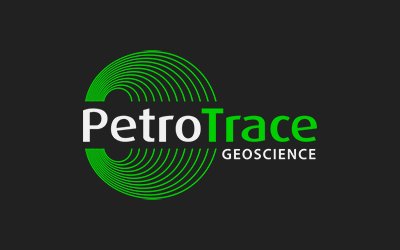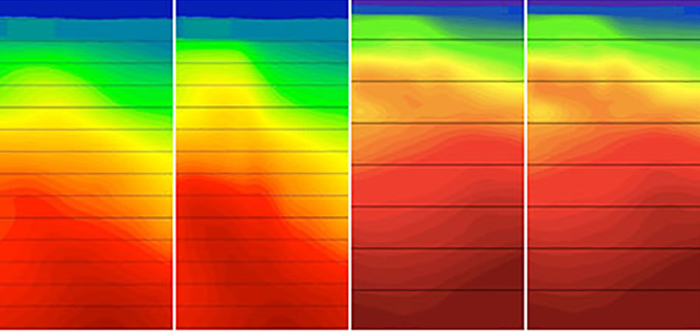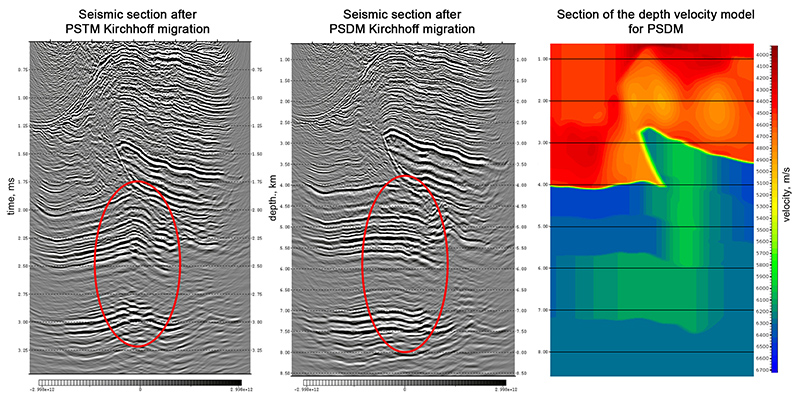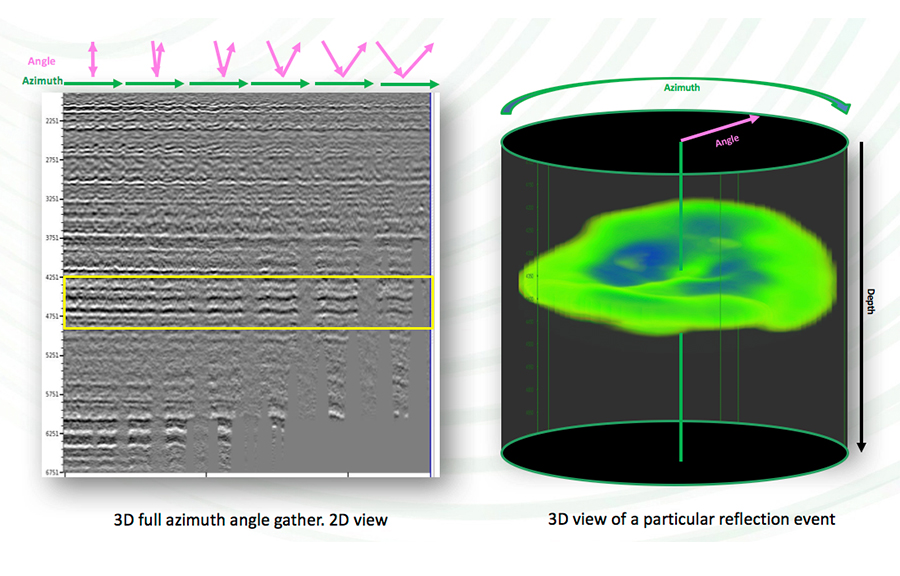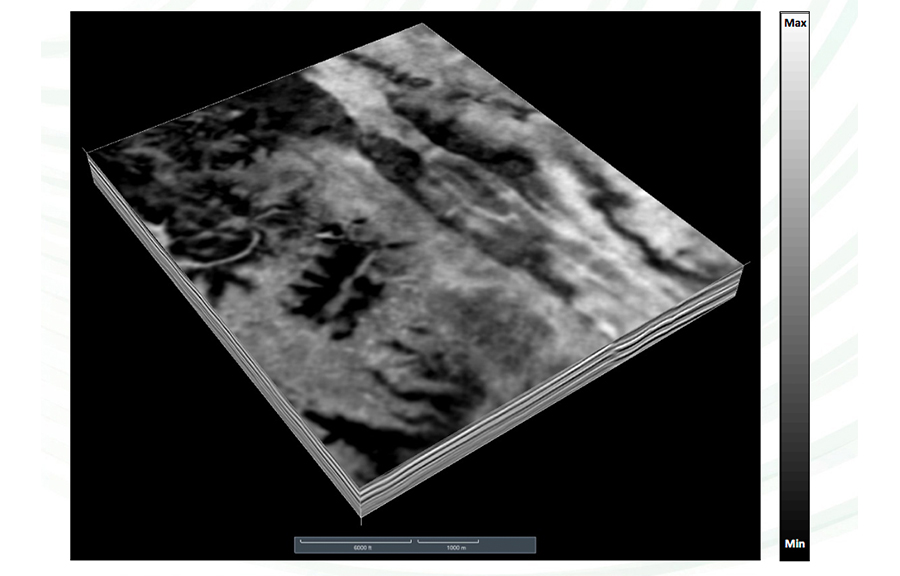
Optimal focusing & positioning

Optimal focusing & positioning
In areas with strong vertical and lateral velocity variations, the conventional time migration does not always allow the optimum image of the subsurface to be obtained. To increase focusing and move seismic reflections to their correct position, the PetroTrace team performs velocity modelling to any degree of complexity and uses the full range of the pre-stack depth migration algorithms. Depth images, calibrated to well data, significantly increase the accuracy of the subsequent structural and dynamic interpretation.
In areas with strong vertical and lateral velocity variations, the conventional time migration does not always allow the optimum image of the subsurface to be obtained. To increase focusing and move seismic reflections to their correct position, the PetroTrace team performs velocity modelling to any degree of complexity and uses the full range of the pre-stack depth migration algorithms. Depth images, calibrated to well data, significantly increase the accuracy of the subsequent structural and dynamic interpretation.
Initial Velocity Model Building
The adequacy of the initial velocity model largely determines the quality and run-time of depth migration. To construct the initial velocity model PetroTrace experts use a combination of the results of the vertical and horizontal velocity analysis, well data, as well as all available a priori information. Years of experience with complex topology allows us to efficiently simulate such structural elements as salt domes, intrusive bodies and overthrusts. Enquire about this service >>
Velocity Model Refinement
Since the result of depth migration is strongly dependent on the quality of the velocity model, the migrated depth gathers provide an optimal data to refine the velocity. PetroTrace geophysicists use innovative interactive and automatic procedures for analysing and picking residual move-outs on the depth migrated gathers. RMO volumes are used to update the initial velocity model by a constrained velocity inversion and by a grid and layer tomography. Enquire about this service >>
Migration Algorithms
The seismo-geological features of a particular area and survey design parameters dictate the choice of the optimal migration algorithm to achieve the geological task often to extremely tight deadlines. PetroTrace specialists possess a complete set of migration options based on ray tracing as well as on the wave equation solution. Extensive experience in the application of various migration algorithms allows us to select and recommend the most effective option for optimal imaging in a specific geological setting. Enquire about this service >>
Accounting for Anisotropy
Velocity anisotropy can significantly affect the focusing and positioning of migrated reflections. PetroTrace geophysicists carry out projects which include analysis of Tomsen anisotropic parameters, constructing volumes of these parameters and using the anisotropic parameters volumes in migration solutions. Anisotropic migration results have higher resolution, enhance seismic/well ties and increase confidence in the seismic reservoir characterisation. Enquire about this service >>


